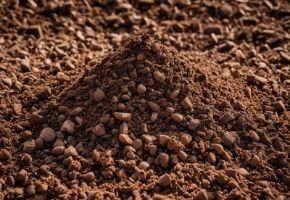The Ganoderma lucidum, commonly known as the Reishi mushroom, is one of the most valuable and sought-after medicinal mushrooms in the world. Its ability to adapt to different climatic conditions makes it particularly interesting from an ecological point of view. Today, let's see what habitat it normally is born, develops, grows, and reproduces in...
Primary natural habitat
In natural conditions, the Reishi requires a habitat with certain characteristics, let's see which ones below...
Optimal climatic conditions
- Temperature: Reishi prefers temperatures between 18 and 28°C
- Humidity: requires a relative humidity of 75-85%
- Light: needs indirect and moderate light
Preferred substrates
Reishi mainly grows on:
- dead hardwood, particularly oak and maple
- decomposing stumps and logs
- dead roots of ancient trees
Geographical distribution
East Asia
East Asia represents the original habitat of Reishi, with significant presence in:
- China: mainly in the provinces of Yunnan, Sichuan, and Hubei
- Japan: widespread in the forests of Hokkaido and Honshu
- Korea: present in mountainous wooded areas
Europe
Although one might think that Reishi is a mushroom found only in the East, it can actually also be found in Europe, as it is present in:
- Italy: mainly in the Alpine and Apennine regions
- France: in the wooded areas of the Pyrenees and the Alps
- Germany: in the Black Forest and other forested areas
North America
In this area, Reishi has a significant presence in:
- Eastern United States: particularly in the Appalachians
- Canada: in the temperate forests of British Columbia
Specific microhabitats
There are small differences between one habitat and another in the same geographical area that can have a great impact on the proliferation of Ganoderma, let's see which ones
Temperate forests
- mature hardwood forests
- areas with high soil humidity
- areas with good air circulation
Mountain areas
- Altitude: between 400 and 2000 meters above sea level
- Exposure: preferably north-facing slopes
- Vegetation: presence of old trees and dead wood
Main natural harvesting areas
Asia
- China
- Changbai Mountains
- Yunnan Forests
- Central provinces
- Japan
- Aomori Forests
- Mount Fuji
- Hokkaido Island
Europe
- Italy
- Sila National Park
- Casentino Forests
- Eastern Alps
Seasonality
As with all mushrooms, there is a specific time period in which harvesting is possible, for Reishi it varies from area to area...
Optimal Growth Period
- Spring: March-May in temperate areas
- Summer: June-August in mountainous areas
- Autumn: September-November in Mediterranean areas
Recognition tips
As always, it is important to pay particular attention to what is collected in nature, mushrooms can hold unpleasant surprises, it is necessary to know them well to distinguish edible ones from poisonous ones...
Distinctive features
- Shape: shelf-like or fan-shaped
- Color: glossy upper surface, from reddish to dark brown
- Size: from 5 to 30 cm in width
Habitat conservation
We want to give particular attention to the ever-growing need to safeguard forests and natural habitats of Ganoderma. But what puts Reishi at risk?
Main threats
- deforestation
- climate change
- overharvesting.
Protection measures
- harvesting regulation
- conservation of mature forests
- creation of specific protected areas
- cultivation in greenhouses or indoors.
Remembering the primary importance of protecting forests, flora, and fauna, we want to invite readers and all enthusiasts to implement all actions that will ensure the conservation of Reishi over time.
The fungal kingdom is a universe in continuous evolution, with new scientific discoveries emerging every year about their extraordinary benefits for gut health and overall well-being. From now on, when you see a mushroom, you will no longer think only of its taste or appearance, but of all the therapeutic potential it holds in its fibers and bioactive compounds. ✉️ Stay connected - Subscribe to our newsletter to receive the latest studies on: Nature offers us extraordinary tools to take care of our health. Fungi, with their unique balance between nutrition and medicine, represent a fascinating frontier we are only beginning to explore. Continue to follow us to discover how these extraordinary organisms can transform your approach to well-being.Continue your journey into the world of fungi










